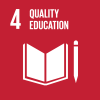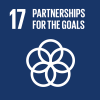Rebon Seminar is one of the regular activities of the Department of Physics, as a place to discuss and exchange ideas about research, studies and phenomena according to the Field of Study Groups in Physics UGM. On 3 April 2024, the Rebon Seminar carried a theme around the world of oil and gas with the topic ‘Non Seismic Geophysical Methods for Oil and Gas Activity’ presented by Boko Nurdiyanto Suwardi, M.Si. as Sr. Specialist Innovation Geophysics Upstream Innovation Pertamina Hulu Energi. This seminar was held online via Zoom Meeting and moderated directly by the Coordinator of KBK Geosciences, Dr.rer.nat. Ade Anggraini, S.Si., M.T.
The seminar began with sharing related to the upstream process in the modern oil and gas industry which consists of exploration and production activities. The series of activities include geological studies, geophysical studies, seismic drilling to the development of production wells, which of course takes a lot of cost and time (>10 years). Geophysics itself is a study of the earth using physics. In its application, geophysicists study the nature or physical characteristics of rocks with methods such as reflection seismic, refraction seismic, gravity, magnetic, electromagnetic, and so on, to then interpret subsurface conditions.
Broadly speaking, there are four classifications of geophysical methods: gravity, magnetic, seismology, electrical and electromagnetics. In seismology, there are reflection seismic and refraction seismic methods, both of which are very popular for oil and gas exploration activities. In reality in the field, there are many poor surface conditions that become obstacles in applying seismic methods. This underlies the need for integration of seismic methods with other (non-seismic) geophysical methods.
Entering the production phase, geological and geophysical data is required for drilling development (additional production wells). One example of a method being developed with Geophysics UGM in this process is the Controlled Source Audio-frequency Magnetotelluric (CSAMT) method. This method is used as a Direct Hydrocarbon Indicator through electromagnetic survey, which produces output in the form of resistivity data well logs. Examples of other methods that are still under development for the production phase include: Transient Electromagnetic (TEM), Low Frequency Passive Seismic, Thermal Method, and Gradient Vertical Gravity.

Speaker presentation on the Controlled Source Audio-frequency Magnetotelluric (CSAMT) method developed by Pertamina Hulu Energi and Geophysics UGM
‘The development of other geophysical methods is quite slow even though the potential to explore is quite large, hopefully educational institutions will also develop methods other than seismic such as electrical and electromagnetics with funding efforts from institutions and industries,’ said Boko. This integrated geophysical method approach will be much more powerful in solving complex problems encountered in oil and gas exploration and production activities.
Sharing about the twists and turns of oil and gas development through this Rebon Seminar is an effort that supports the achievement of the 4th pillar, 9th pillar, and 17th pillar of the Sustainable Development Goals relating to quality education, inclusive and sustainable industries and partnerships to achieve these goals. Participants were invited to recognise and participate in developing non-seismic geophysical methods to support and improve the oil and gas inclusive industry in Indonesia. This seminar is also expected to strengthen research bonding between Geophysics UGM and Pertamina Hulu Energi to continue to innovate that is useful for sustainable development and global citizenship and partnership.
Author: Rafida Salma Rahmawati
Photos: Rafida Salma Rahmawati



